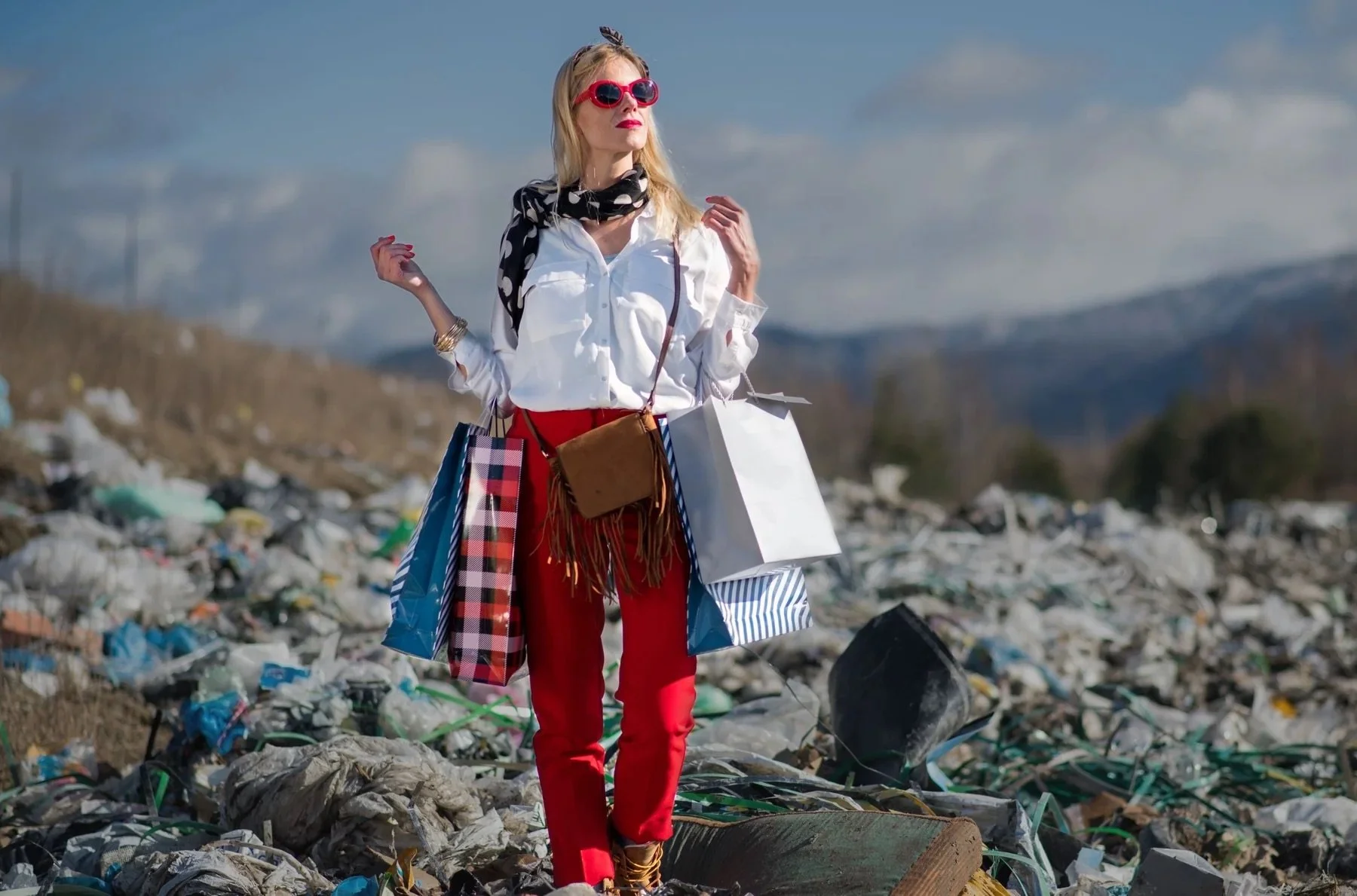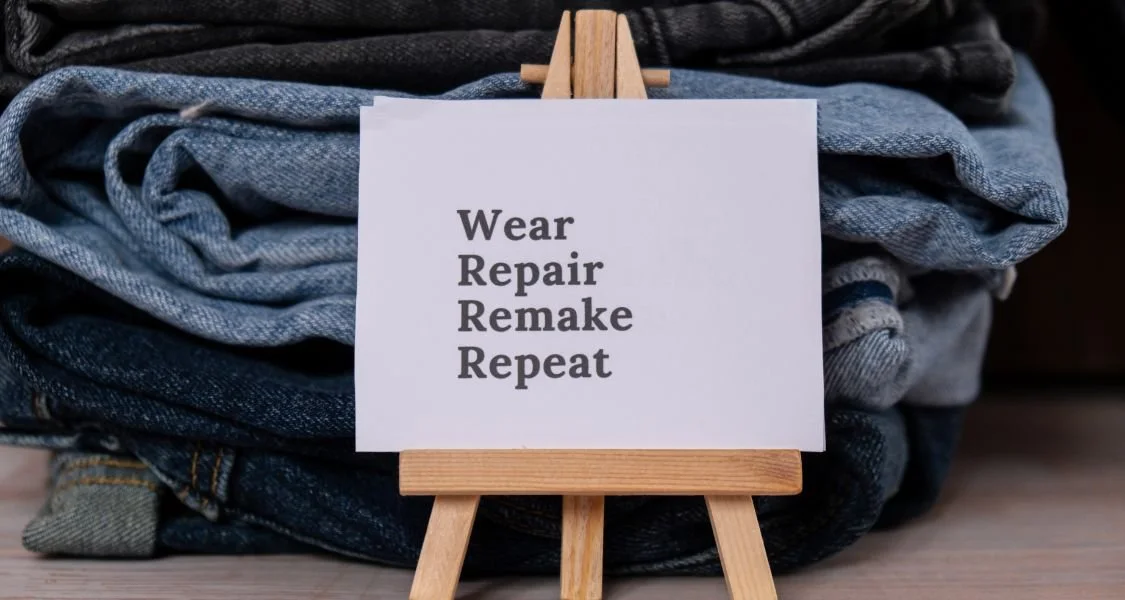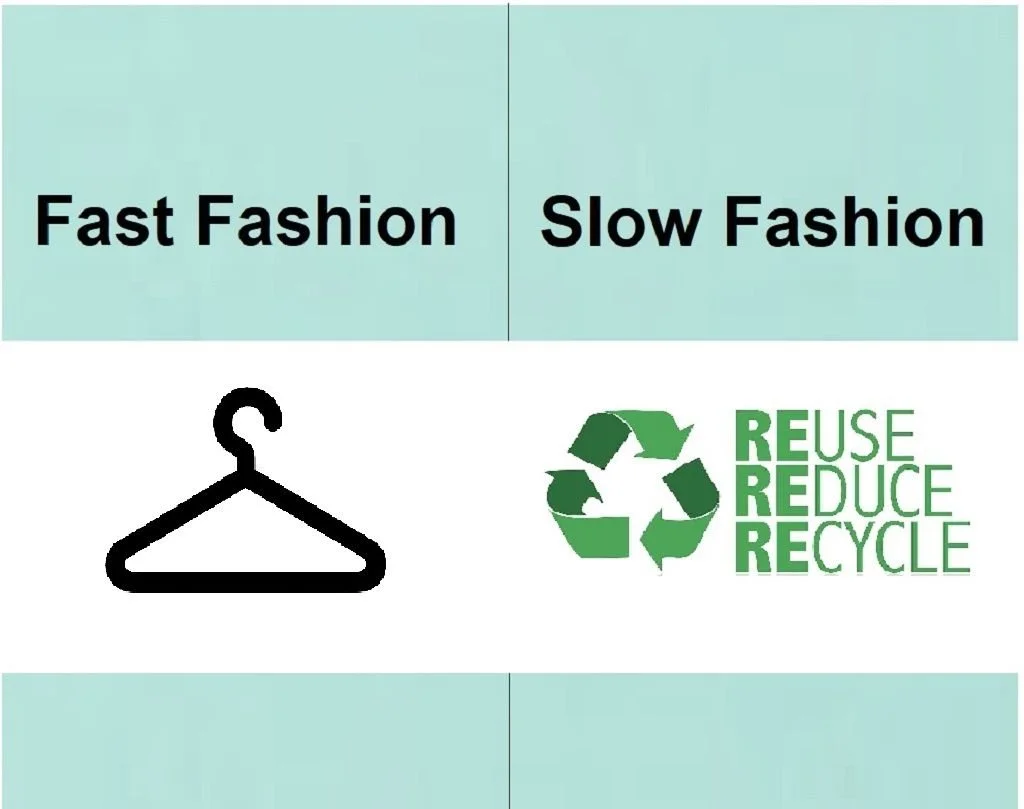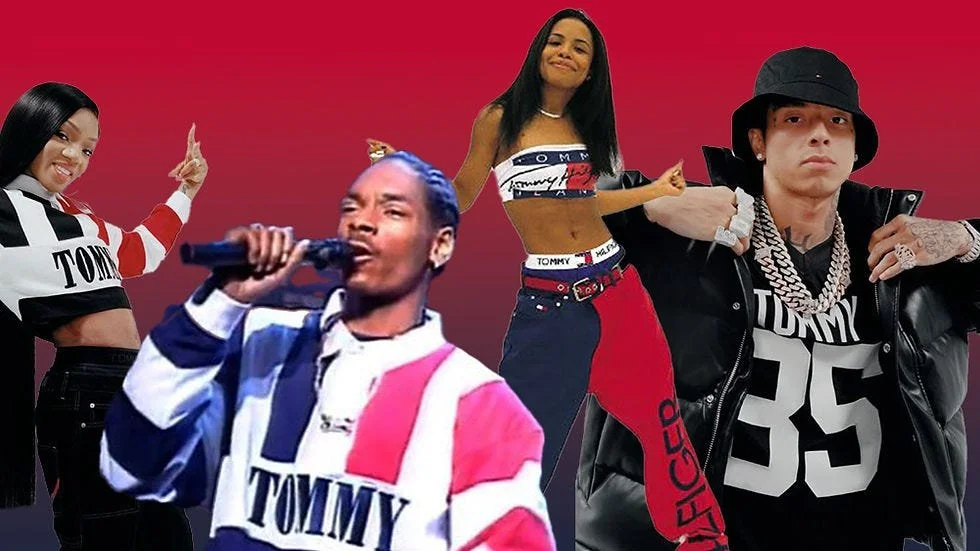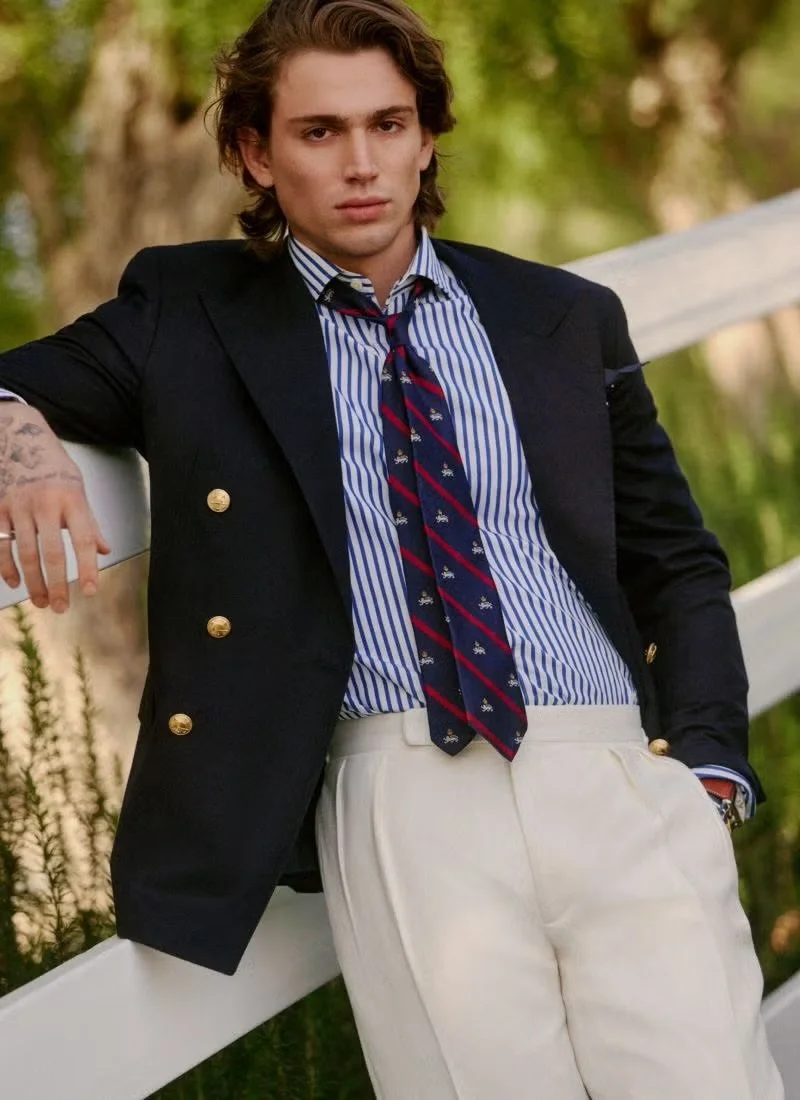Fast vs. Slow Fashion: Building a Sustainable Wardrobe.
In today’s dynamic world, the fashion landscape has evolved dramatically from what it was 60 years ago. While clothing was largely influenced by functionality and practicality (Most men’s clothing can be traced back to military roots in one way or another) Today’s clothes seem to focus more on trends and pop culture. The emergence of fast fashion retailers and the relentless pace of trend cycles have left consumers grappling with a choice: indulge in cheap, ever-changing styles or invest in durable, timeless pieces. Let’s examine the advantages and drawbacks of both paths, and see if we can find some ways to build a more sustainable, SUITable wardrobe.
What is fast fashion?
Fast fashion is a business model within the clothing industry that is focused on producing large quantities of trendy, inexpensive garments quickly and at low cost. The goal is to have as fast a turnaround as possible, with runway and social media inspired styles going from concept to store shelves in a matter of weeks or even days. In fast fashion, rapid turnaround also means high turnover. New styles are introduced frequently, encouraging consumers to buy more often and discard clothing after only a few wears. Items are typically made with inexpensive materials and manufactured in countries with cheap labor to keep costs down while boosting profit. But while fast fashion can make trendy clothing more accessible, it does raise some concerns about environmental damage, waste, and unethical labor practices.
Designer Landfill
Over 11.3 megatons of textile waste ends up in US landfills every year.Feb 3, 2025
Alarming Facts about Fast Fashion:
Resource Depletion - Fast fashion relies heavily on natural resources. According to the World Resources Institute (WRI), producing one cotton shirt requires approximately 2,700 liters of water—enough for one person to drink for 2.5 years (WRI, 2019). Additionally, synthetic fibers like polyester, derived from fossil fuels, contribute to the depletion of non-renewable resources. Polyester production released about 706 million tons of greenhouse gases into the atmosphere in 2015 alone (Ellen MacArthur Foundation, 2017).
Water Pollution - Dyeing and finishing processes in textile manufacturing are major culprits of water pollution. The United Nations Environment Programme (UNEP) notes that textile dyeing is the second-largest polluter of water globally. Harmful chemicals used in these processes often end up in rivers and oceans, affecting aquatic ecosystems and local communities.
Greenhouse Gas Emissions - The fashion industry is responsible for 10% of global carbon emissions, surpassing international flights and maritime shipping combined (UNEP, 2019). The energy-intensive production processes, coupled with extensive global transportation networks, significantly contribute to climate change.
Business is booming…
According to House of Common Environmental Audit Committee, 2019, “Clothing production is the third biggest manufacturing industry after the automotive and technology industries. Textile production contributes more to climate change than international aviation and shipping combined”. (Live a Little More)
Waste Generation - Fast fashion's business model promotes a "wear-and-dispose" culture, leading to staggering amounts of textile waste. The Environmental Protection Agency (EPA) reported that in 2018, 11.3 million tons of textile waste ended up in U.S. landfills. Globally, less than 1% of used clothing is recycled into new garments, exacerbating landfill overflow and environmental degradation (Ellen MacArthur Foundation, 2017).
Microplastic Pollution - Synthetic fabrics like polyester shed microplastics with each wash. These tiny plastic particles, often barely visible, make their way into water bodies, posing risks to marine life and entering the food chain. A study by the International Union for Conservation of Nature (IUCN) estimated that 35% of microplastics in the ocean originate from synthetic textiles (IUCN, 2017).
What is Slow Fashion?
Slow fashion is a movement promoting mindful, sustainable clothing choices. Unlike fast fashion’s rapid, cheap, and disposable model, slow fashion values quality, ethical production, and environmental responsibility. Coined by Kate Fletcher, the term emphasizes “designing, producing, consuming, and living better.”
Facts about Slow Fashion:
Quality Over Quantity - Garments are durable, well-crafted and meant to last. As I mentioned before, much of the clothing up until the last century was focused on functionality and practicality. Clothing was made to last longer because most people could not afford to buy new clothes often, and if you were a working individual, they simply had to last.
Ethical Production - Fair wages, safe conditions, and respect for workers. Many of the slow fashion brands focus on ensuring that the people who make the clothes are fairly compensated and work in a safe environment, helping to protect not just their lives and work, but also their dignity.
Eco-Friendly Practices: The use of organic, recycled, or low-impact materials equals reduced waste and emissions. Recycling or repurposing materials is a great way to give new life to old clothing, and to keep these garments in your closet and out of landfills.
Hello Eco-friend!
Recycling materials, Thrifting, reimagining old designs and getting creative (like turning old jeans into shorts, or an old sweater into a bag, etc.) are great ways to be eco-friendly and stylish.
Local & Small-Scale: Many of the slow fashion brands have short supply chains, small batches, and are often made-to-order. While this can also mean higher upfront costs, the impact on the planet is significantly less. Ultimately, the consumer ends up saving more money, since they do not have to keep buying poorly made clothes that will disintegrate after just a few wears. This brings me to my last point:
Mindful Consumption: Buying less, repairing more, and valuing each item. It’s no wonder why companies are now trying to label everything as “vintage” (even if it’s not.) There’s a reason why vintage clothing has been around for as long as it has. Caring for your items, repairing and investing in extending the life of your garments is a great way to have a classic, timeless wardrobe while simultaneously helping the environment.
What can be done?
The environmental impact of fast fashion is extensive, affecting natural resources, ecosystems, and contributing to climate change. Addressing these issues requires systemic changes in production practices, consumer behavior, and regulatory frameworks. Sustainable fashion, emphasizing eco-friendly materials, ethical production, and circular economy principles, offers a viable path forward. Let’s recap some of the pros and cons of both fast and slow fashion, and investing in quality pieces:
Pros Vs. Cons
Fast Fashion
Pros: Affordability, Trend Adoption, Variety and Convenience. Cons: Environmental impact, quality concerns, ethical issues, and a short lifespan.
Slow Fashion:
Pros: Durability, timeless style, sustainability and ethical production. Cons: Higher Upfront Cost, Limited Trend Options, Availability (High-quality clothing may not be as readily available as fast fashion, requiring more time and effort to find and purchase.)
In my opinion, being trendy isn’t worth the damage to our beautiful planet. I also don’t think being trendy is conducive to building a signature brand that is timeless and unique. Take two of America’s top designers, for example: Tommy Hilfiger and Ralph Lauren.
Tommy Hilfiger Inc. debuted its first collection in 1985, when a young Tommy Hilfiger partnered with Indian Textile magnate Moran Murjani. Hilfiger had a modernized take on classic button down shirts, chinos and other preppy styles. While the preppy look was a part of the brand’s image for a few years, it would soon change in the 90’s when their marketing team began to work in tandem with the popular music industry, sponsoring tours like Pete Townshend’s Psychoderelict in 1993 and adapting his designs to fit the baggier, oversized styles (and equally oversized logos) popular in hip-hop. The brand gained major visibility when Snoop Dogg wore a Hilfiger sweatshirt on Saturday Night Live, causing it to sell out in New York the next day. Embracing this cultural crossover, Hilfiger featured artists like P. Diddy and Coolio at his runway shows and made R&B star Aaliyah a brand spokesperson in 1997. There’s no doubt that the Tommy Hilfiger brand has managed to stay successful throughout the years, but for a while it strayed very far from the modern preppy looks it once aimed to design, and became a shadow of its former self. I’m happy to see that in their latest collection, the brand has returned to some of its roots, though you scan still see the influence of pop culture in its oversized designs.
In contrast, the Ralph Lauren Corporation was founded in 1967 with a line of men's ties. A 28 year old Ralph Lauren worked for the tie manufacturer Beau Brummell. Lauren persuaded the company's president to let him start his own line. Drawing on his interests in sports, Lauren named his first full line of menswear "Polo" in 1968. By 1969, the Manhattan department store Bloomingdale's sold Lauren's men line exclusively. It was the first time that Bloomingdale's had given a designer his own in-store shop. In 1971, Ralph Lauren Corporation launched a line of tailored shirts for women, introducing the Polo player emblem on the shirt cuff. The first full women's collection was launched the following year. The company has acquired and created multiple brands since (Chaps, Double RL, Lauren Ralph Lauren, Pink Pony, RLX Golf, and Ralph Lauren Purple Label, just to name a few) but the overall aesthetic of Ralph Lauren remains unchanged - Timeless, Sports inspired American classic wear.
This isn’t to say that one brand is better than the other, they are both iconic in their own rights, but I simply want to emphasize that sometimes following trends means losing your Identity.
So How can you build a sustainable, SUITable wardrobe?
Prioritize Quality over Quantity: Invest in fewer, higher-quality pieces that will last longer, rather than accumulating a large number of cheaper, disposable items.
Choose Timeless Styles: Focus on classic, versatile pieces that can be styled in multiple ways and remain fashionable over time.
Buy Second-Hand: Consider shopping at thrift stores or online resale platforms to reduce waste and give pre-loved garments a new home.
Reasons to Thrift:
1. You can find hidden treasures.
2. You can save money.
3. You can save the world.
Care for Your Clothes: Proper care and maintenance can extend the life of your garments. Follow care instructions, repair when possible, and avoid over-washing.
Capsule Wardrobe: Create a capsule wardrobe by selecting a small number of versatile, essential items that can be mixed and matched to create various outfits.
Mindful Consumption: Be intentional with your purchases. Before buying, ask yourself if you truly need the item and if it aligns with your style and values.
Support Ethical Brands: Research and support brands that prioritize ethical production practices and sustainable materials. Some examples include:
Taylor Sticth: A classic brand dedicated to timeless, thoughtful apparel. Having been around for over a decade, the brand is paring down to the essentials and focusing on men’s apparel that will last for the long haul. In fact, Taylor Stitch is also the mastermind behind Restitch, a repair and resell program to extend a product’s life and minimize waste.
Quince: The company ships directly from their factories, cutting out the middleman and excessive packaging (you can read more about Quince’s supply chain here). They also use eco-friendly materials to make their garments—like recycled polyester for activewear and organic cotton twill for the chinos. Stylish, affordable, and sustainable.
Patagonia: known for championing the great outdoors, this brand is a go-to for anyone who loves camping, hiking, or simply being in the sun. With fair labor practices, safe working conditions, and an eco-friendly mindset, every part of Patagonia’s supply chain speaks to the brand’s philosophy of doing no harm. Each item even comes with a Footprint Chronicle so you can follow the exact process of how your clothing was made, from the textile mill to the sewing factory.
(For more brands, check out The good trade)
〰️
(For more brands, check out The good trade) 〰️
In conclusion, the choice between fast fashion and investing in quality pieces comes down to individual priorities and values. While fast fashion offers affordability and variety, it comes with significant ethical and environmental concerns. On the other hand, quality pieces provide durability and sustainability but require a higher initial investment. By incorporating these tips, you can build a wardrobe that is not only stylish but also sustainable and conscientious. I hope this post helps!
